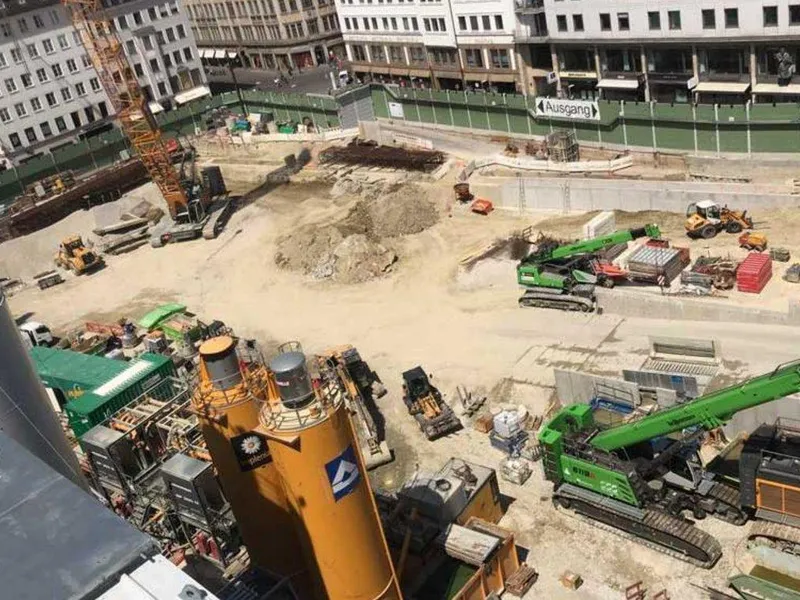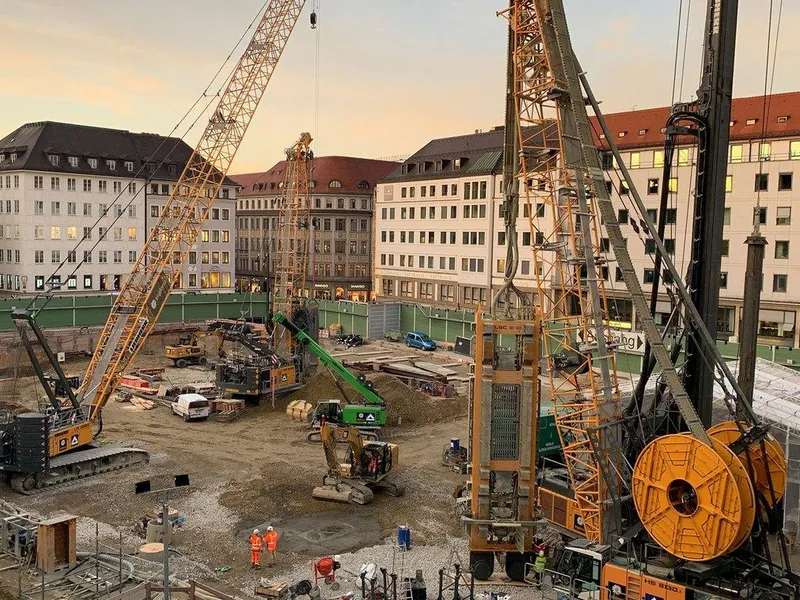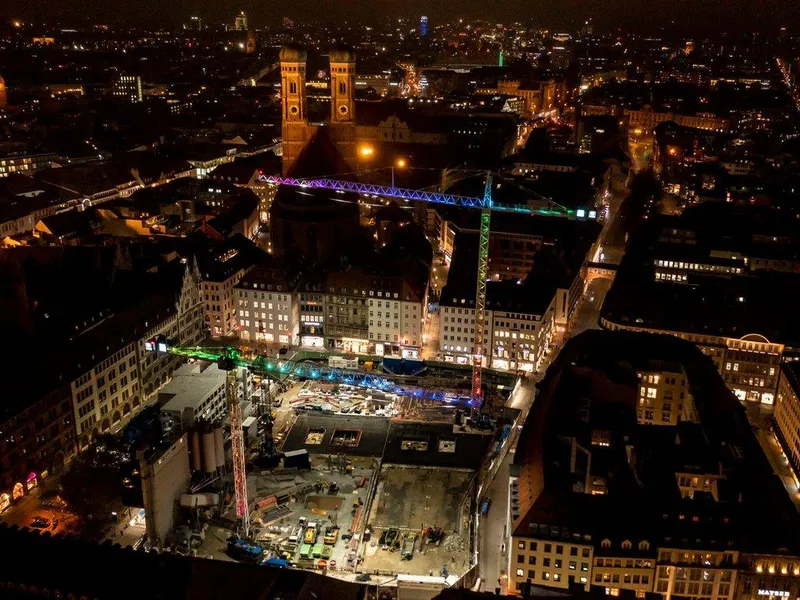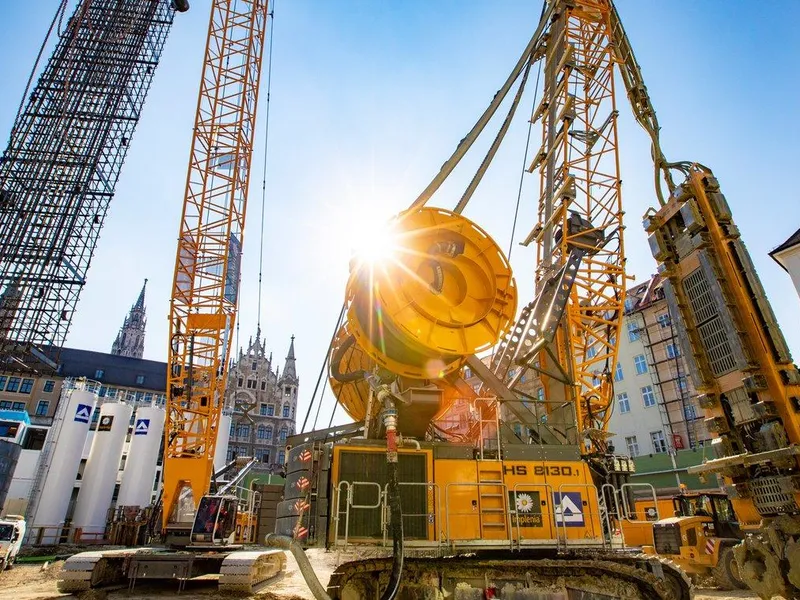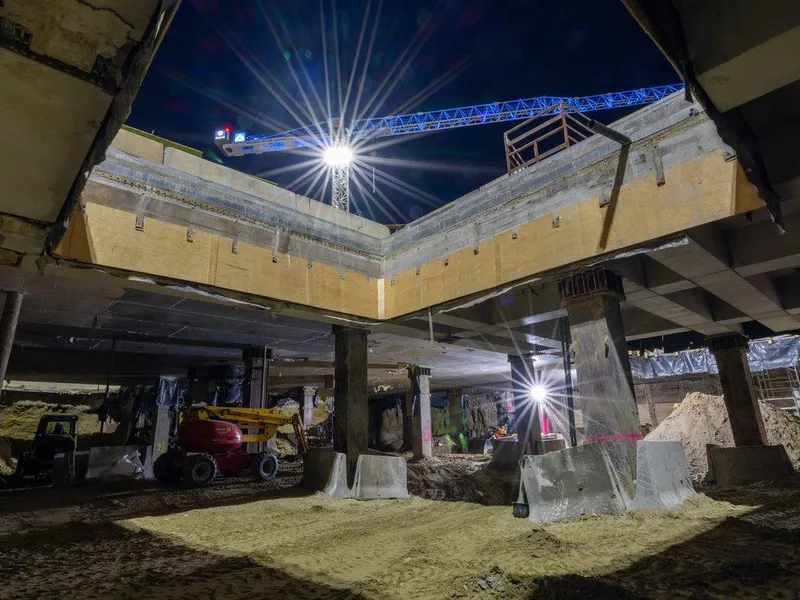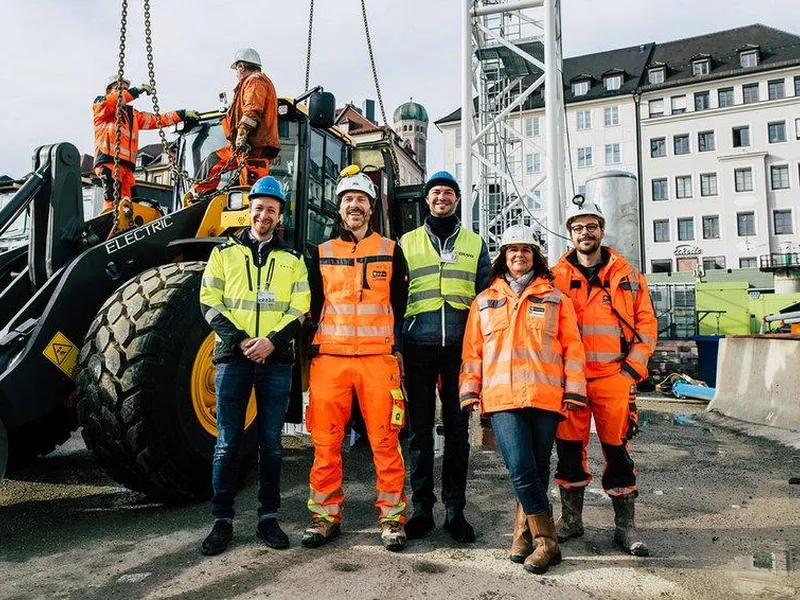S-Bahn-Stammstrecke München - Neubau Haltepunkt Marienhof
Beskrivelse: Das Projekt S-Bahn-Stammstrecke München umfasst den Neubau des Haltepunkts Marienhof mit Tunnelvortrieb. Fertigstellung ist für 2028 geplant. Les mer ↧
Fase: Bygging
| Byggestart | JANUAR 2019 |
| Ferdigstilles | 2028 |
Verdi og størrelse
394 mill EUR
430 kvm
917900 EUR/kvm
Hva skal bygges?
| Lengde tunnell | 130 meter |

Miljøsertifiseringer
Ingen registrerte

Brannkonsept
Ingen registrerte
Aktører
 Arkitekt: atelier4dArchitektenPart GmbB
Arkitekt: atelier4dArchitektenPart GmbB
 Rådgivende ingeniør: 6 selskaper
Rådgivende ingeniør: 6 selskaper
 Generalentreprenør: Hochtief Infrastructure
Generalentreprenør: Hochtief Infrastructure
Klikk på aktørene for å se kontakter
Nøkkelord
Kontakt oss på olav@pekeberg.com for å løfte dine nøkkelord til toppen
Selskaper og personer
Det er 14 selskaper koblet til dette prosjektet.
Lag en bruker eller logg inn for se navn, telefonnummer og e-post adresse til selskapene og kontaktpersonene (f.eks. prosjektleder hos entreprenørene).
Bilder
Kart
Klikk for å se tegnforklaringer
Kilder
21. Aug 2025: Implenia
Elektro-Power unter Tage. Die ARGE Marienhof (Implenia / HOCHTIEF) setzt beim Bau des Bahnhofs Marienhof erstmals einen vollelektrischen Radlader von ...
https://implenia.com/no-no/media/artikel/?tx_news_pi1%5Baction%5D=detail&tx_news_pi1%5Bcontroller%5D=News&tx_news_pi1%5Bnews%5D=7237&cHash=d7c3b36e8e3e165f6b68c9e27fceafbd
21. Mar 2025: Implenia
München Haltepunkt Marienhof. Das Großprojekt 2. S-Bahn-Stammstrecke München setzt sich aus den Teilmaßnahmen „Oberirdische Bereiche“, „Innerstädtisch...
https://implenia.com/de-de/referenzen/detail/ref/muenchen-haltepunkt-marienhof-1/
Oppdateringer
21. Aug 2025
- Hugo Müller lagt til som Bærekraftssjef for Implenia AS
- Hochtief lagt til som Entreprenør
- Volvo lagt til som Maskin- og utstyrsleverandør
21. Mar 2025
- Byggestart lagt til: JANUAR 2019
- Prosjektverdi lagt til: 394 mill EUR
- Totalt areal lagt til: 430 kvm
- Implenia lagt til som Entreprenør
- DB Station & Service AG lagt til som Byggherre
- DB Netz AG lagt til som Byggherre
- DB Energie lagt til som Byggherre
- SSF Ingenieure AG lagt til som Rådgivende ingeniør
- atelier4dArchitektenPart GmbB lagt til som Arkitekt
- ILF Consulting Engineers Austria lagt til som Rådgivende ingeniør
- Arcadis Germany lagt til som Rådgivende ingeniør
- Bernard Ingenieure ZT lagt til som Rådgivende ingeniør
- Geoconsult Deutschland lagt til som Rådgivende ingeniør
- FCP-Fritsch, Chiari & Partner ZT lagt til som Rådgivende ingeniør
- Hochtief Infrastructure lagt til som Generalentreprenør
Byggekamera
Har dette prosjektet et byggekamera?
Send oss en link på olav@pekeberg.com,
så legger vi det til her.


 BuildPilot
BuildPilot








